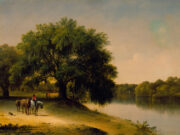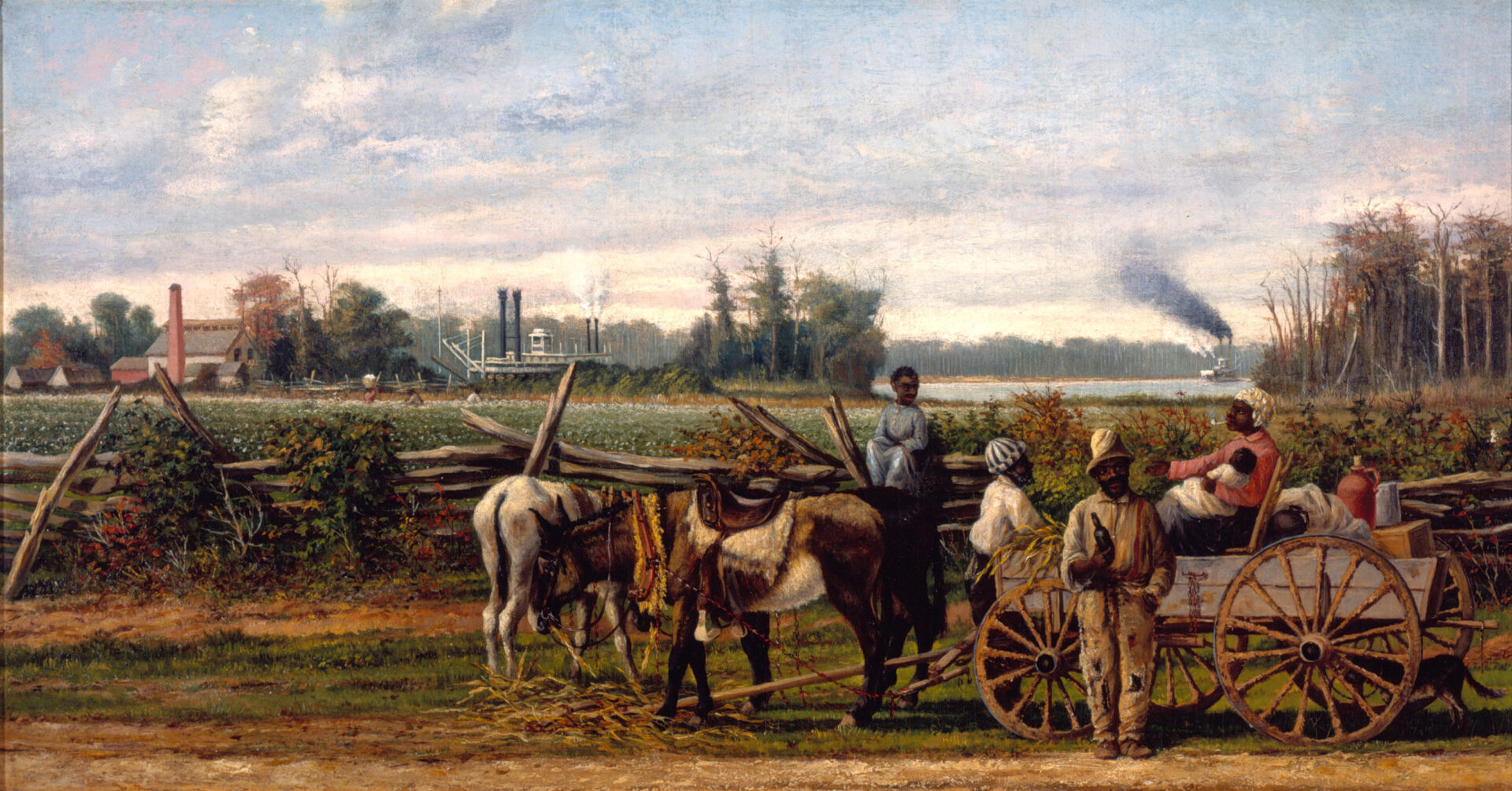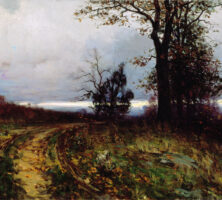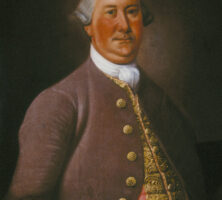American painters of the eighteenth and nineteenth centuries utilized, and evolved from, European examples and traditions. The cultural significance of art in the early years of the nation grew as the country began to mature, evolve, and define itself. American painters of the nineteenth century often favored naturalism and Romanticism over older neoclassical styles and subject matter. Whether Georgia-born artists, immigrants, temporary residents, or tourists, many painters in the state fashioned important contributions to the history of American art. The history of painting in and of Georgia—with the civilizing importance of portraiture, the role of sublime landscape images, the significance of scientific naturalism and realism, and the advent of poetics and emotion at the center of art—mirrors the history of painting throughout the United States during the eighteenth and nineteenth centuries.
Colonial Era and the Early Republic
One of the most noticeable facts about early American painting, especially of the colonial era in Georgia, is that very little exists. Philip Georg Friedrich von Reck’s watercolors and pencil sketches from the 1730s, now in the Royal Library in Copenhagen, Denmark, are among the earliest works of art about Georgia. His work records the buildings at the New Ebenezer settlement in colonial Georgia, as well as the nearby flora and fauna, and the Creek and Yuchi Indians.
Because of its plantation economy, fewer artists migrated to the colonies of the American South than to those of the Northeast; there were simply fewer towns in the South, and they were more distant from one other. During the eighteenth century, however, some artists found patrons in communities along the southern seacoast, especially in Charleston, South Carolina, and Savannah. A few settled in one town for their careers, while others became itinerant artists, traveling to find new patrons. Born in Switzerland, Jeremiah Theüs painted in Charleston and for several decades was an important artist in the South. His portrait of James Habersham Sr. (ca. 1772), who was a president of the Georgia General Assembly and an acting governor during the colonial era, may have been painted in Savannah. Today the portrait is housed at Telfair Museums in Savannah. In Georgia, the English-born John Abbot became prominent, through publications, for his watercolors of local birds and insects.
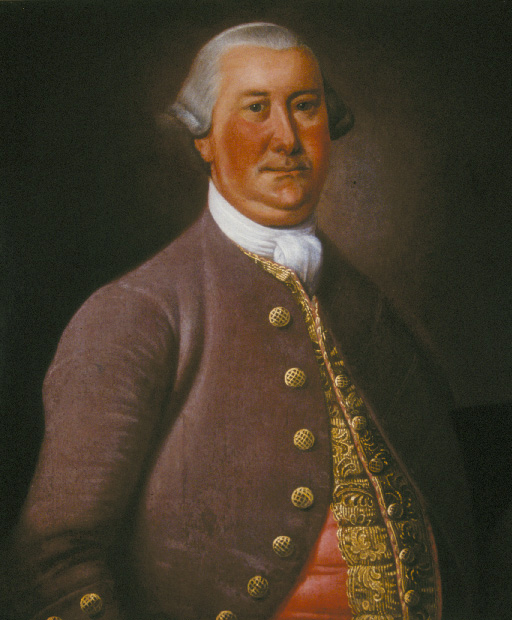
Courtesy of Telfair Museums.
As individual Georgians became involved in national and international politics, they also became patrons for artists or sat for portraits. William Harris Crawford was serving as U.S. secretary of the treasury when he agreed to sit for his own portrait, executed by renowned American entrepreneur and painter Charles Willson Peale, who was working in Washington, D.C. Peale’s portrait of Crawford (1818), housed at the High Museum of Art in Atlanta, was intended for Peale’s museum in Philadelphia, Pennsylvania. During his career, Peale created numerous portrait miniatures of other Georgians, including George Walton, a Georgia signer of the Declaration of Independence. Peale’s son Raphaelle spent time in Savannah, also executing portraits, often in miniature.
Antebellum Period
The turn to the American landscape in the nineteenth century, and its popularity at midcentury, signified a major step toward the development of an essentially American art. English-born landscape painter Joshua Shaw, who immigrated to Philadelphia in 1817, traveled in Georgia during a sketching tour around 1820. Thomas Addison Richards, a British-born painter, illustrator, teacher, and writer, was one of the leading artists of the South during the mid-nineteenth century. In 1842 Richards and his brother, William Cary Richards, published Georgia Illustrated, a series of eleven steel engravings and text, and collaborated on the Orion, a monthly literary publication. During the early 1840s, Richards traveled around the South, filling his sketchbooks with picturesque and sublime images of the landscape; his illustrations and travel articles, often about the American South, appeared in national publications. Richards also created paintings based upon his travels in the southern landscape, including such images of Georgia as River Plantation (1855-60), which is housed at the Morris Museum of Art in Augusta.
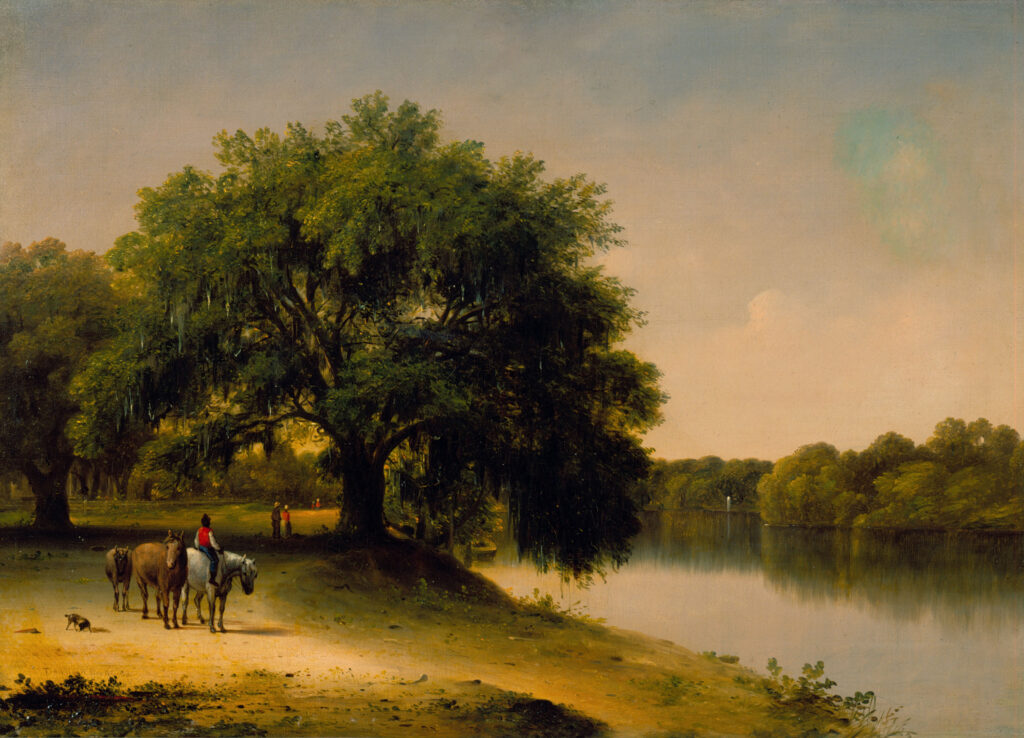
Courtesy of Morris Museum of Art
George Cooke, best known for his portraits of southerners, was born in eastern Maryland in 1793. He first visited Georgia in the late spring of 1840, when he painted portraits in Augusta. He then spent the late summer and fall of that year sojourning through the north Georgia mountains, where he created landscape paintings featuring picturesque and sublime elements typical of the northeast’s Hudson River School. One, Tallulah Falls (1841), is housed at the Georgia Museum of Art in Athens and depicts L’Eau d’Or, Tempesta, and Hurricane falls at Tallulah Falls, in the northeast Georgia mountains. He also rendered a companion painting, now lost, of Toccoa Falls.
The support of patrons in the antebellum years was not often earned via depictions of the landscape but by portraiture and scenes of everyday life. Besides George Cooke, other portrait painters in Georgia during the antebellum years included Benjamin Bynum; John O’Brien Inman, whose portrait of University of Georgia president Alonzo Church (1854) hangs in the Administration Building on campus; John Maier; and William Harrison Scarborough, among others. Before the Civil War (1861-65), portraits of Georgians were executed in the studios of major towns, such as Savannah, or by itinerant painters traveling to places like Athens, Augusta, and Macon. Many itinerant painters of portraits, in oil or watercolor, featuring wealthy and middle-class Georgians remain unidentified.
Civil War and Late-Nineteenth-Century Period
The popularity of genre painting, or scenes of everyday life, continued in the United States during the Civil War and just after. William Aiken Walker, born in Charleston, South Carolina, was a successful itinerant painter who spent much of his career traveling in Georgia, Florida, Louisiana, Maryland, North Carolina, and South Carolina. After serving in the Confederate army during the Civil War, Walker turned his artistic energies to imaging the landscape and everyday life of the South during Reconstruction. Many of his paintings were executed on a small scale, making them easily portable and inexpensive. Several of his city and river scenes were published as lithographs for Currier and Ives. His Plantation Portrait (1885), housed at the Morris Museum of Art, is typical in its horizontal format, the use of African American sharecroppers and workers in the foreground, a middle ground of a cotton field, and a background of outbuildings, steamboats, and a river. In other paintings, Walker portrays market and wharf views, with African American dock workers, newsboys, and vendors.
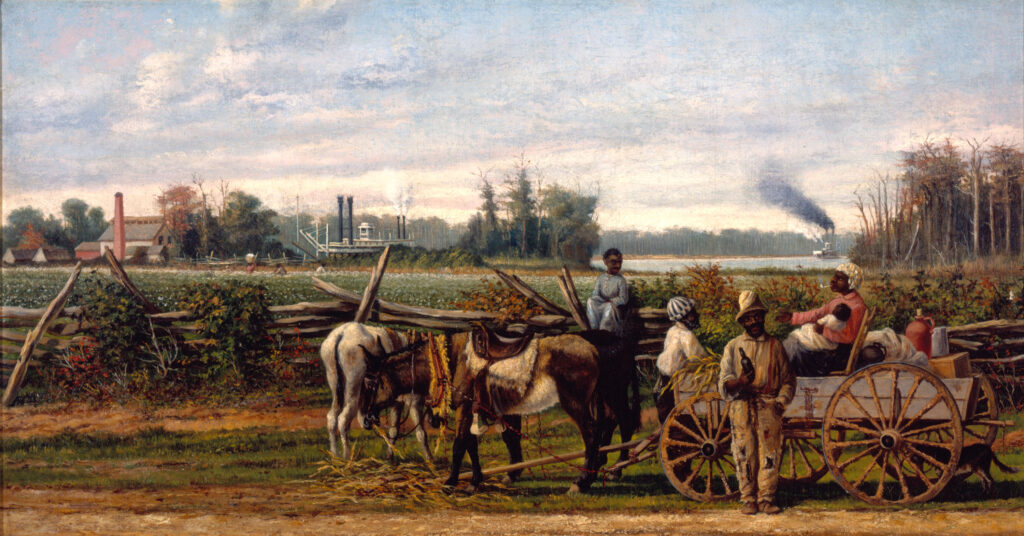
Courtesy of Morris Museum of Art
In the years after the Civil War, some American painters, including William Michael Harnett and John Peto, made careers for themselves by producing ultra-realistic, or trompe l’oeil, paintings. Often creating still-life images, these artists designed paintings to trick the eye of the viewer with emphasis on three-dimensional qualities, especially texture and shadows, everyday objects, and humor. Working in Georgia for much of his artistic career, Hal Alexander Courtney Morrison was a native Canadian who attended Harvard Medical School in Cambridge, Massachusetts. While living in Atlanta, Morrison decided to teach art, and he became best known for his still-life images, especially fish and game compositions. He also created scenes of cotton plantations and painted the portrait of Joseph M. Terrell, the governor of Georgia from 1902 to 1907, which is today part of the collection at the courthouse in Meriwether County. His Hanging Game: Wood Duck and Mallard (ca. 1890), housed at the Charleston Renaissance Gallery in Charleston, South Carolina, is typical of Morrison’s interest in still-life imagery.
At the end of the nineteenth century, American painters were greatly influenced by the aesthetics of both French Barbizon art and French impressionism. Some American artists, like William de Leftwich Dodge, invested scenes with personal moods, as did their French Barbizon counterparts, while others used bright, impressionist color and noticeable brush strokes. Born in Virginia, Dodge was raised in Europe, where his mother had moved to study painting in 1879. He studied art in Paris, France, and settled in New York City as a painter of murals and landscapes. Dodge spent several summers at Giverny in France, where he created art in the town of the French master Claude Monet. In the United States, Dodge made several trips to Georgia, producing images like Summer Day under Spanish Moss (1910), which is housed at the Greenville County Museum of Art in Greenville, South Carolina.
Renowned landscape painter George Inness initially worked in the meticulous style of the Hudson River School. Inness later became known for his spiritual canvases with subdued tonality and ethereal lighting. He traveled to Europe while still in his twenties and was exposed to the old masters, the French Barbizon landscape painters, and the clear, fresh light of Italy. Influenced by the writings of Emanuel Swedenborg, a Swedish scientist-mystic who interpreted the spiritual realm in terms of the material world, and the American poet Ralph Waldo Emerson, Inness created misty scenes of the American landscape. He remarked that he was interested in capturing the spiritual impression of nature rather than the visual details of natural objects. As part of his many sojourns, Inness made trips through Georgia for extended stays in Florida during the 1880s. Paintings like Georgia Pines, Afternoon (1886), in the collection of the Museum of Fine Arts in Boston, Massachusetts, and Georgia Pines (1890), housed at the Smithsonian American Art Museum in Washington, D.C., typify Inness’s technical interest in color, composition, and brushwork. His paintings of the Georgia landscape parallel his other images of American locales in their symbolic mode of expression derived from a spiritual understanding of nature. George Inness Jr., his son, made the trips with his father and executed poetic landscapes of Georgia as well.
Born in Pittsburgh, Pennsylvania, Henry Ossawa Tanner, arguably America’s premier African American artist at the turn of the century, lived for a time in Georgia. Tanner studied with renowned American painter Thomas Eakins at the Pennsylvania Academy of Fine Arts in Philadelphia. In 1888 Tanner moved to Atlanta, where he opened a photography studio. Although his photography venture failed, Tanner remained in Atlanta through 1890, teaching drawing to faculty members and painting portraits at Clark University (later Clark Atlanta University). Georgia Landscape (ca. 1889), in the collection of the Morris Museum of Art, was likely painted during the time Tanner spent in and around Atlanta and features the muddy palette and broad brushstrokes typical of the French Barbizon influence on American art. Tanner, Dodge, and other turn-of-the-century American painters created works with a style of intimacy and expressiveness, employing delicate effects of light to create poetic images.
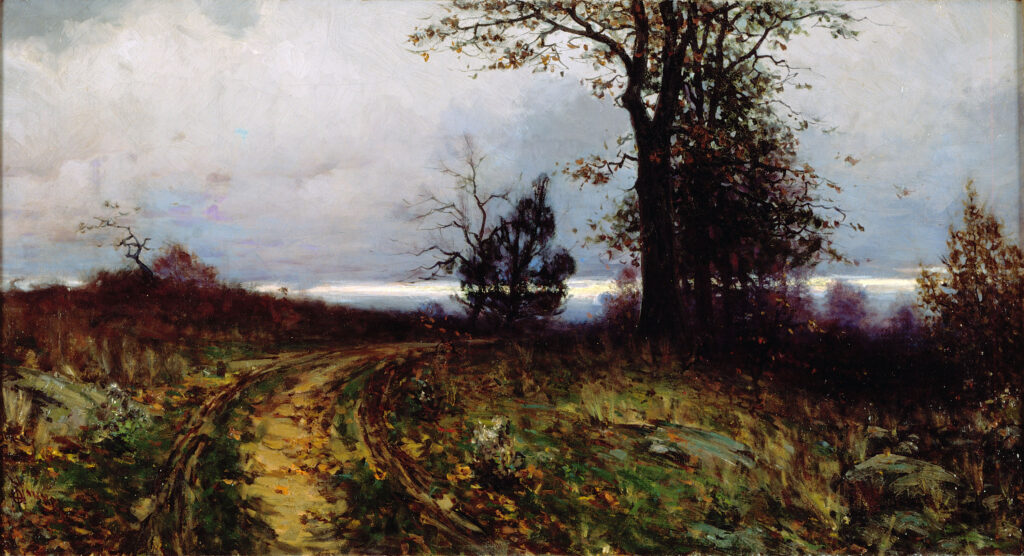
Courtesy of Morris Museum of Art
As the nineteenth century drew to a close, early-twentieth-century artists from, relocating to, or visiting Georgia would play vital roles in the history of American impressionism, modernism, and American scene painting.


